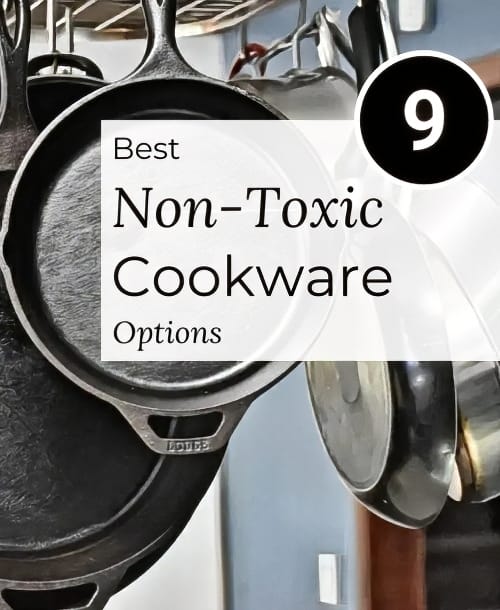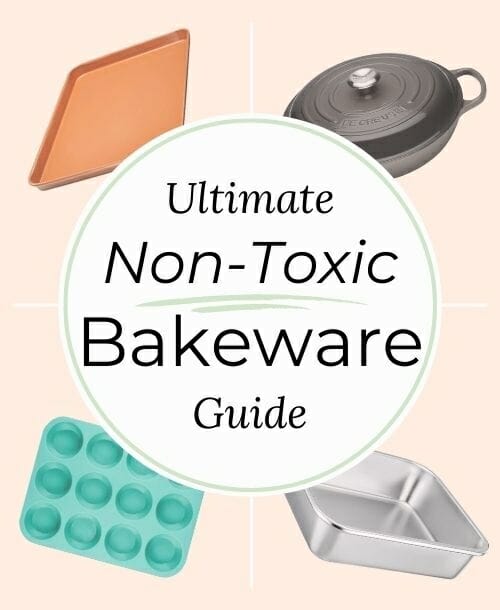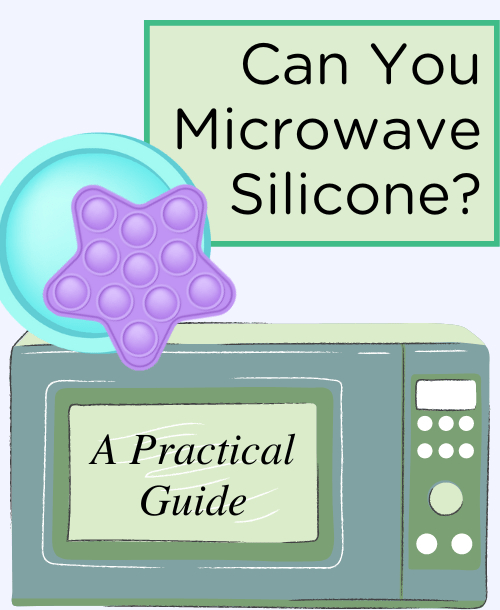
Microwaves are a common fixture in modern kitchens, as you’ve noticed. And today, kitchens are filling with silicone kitchen products at a rapid pace.
From silicone bakeware to pot holders, many of us have begun to rely on this miracle material. I mean, why not? It can seemingly handle any-and-all kitchen tasks.
But can you microwave silicone? Is silicone safe in the microwave?
The quick answer is yes, silicone is microwave-safe – it won’t melt or burn. However, there are a few things to keep in mind to ensure your safety.
Keep reading to learn more about silicone’s health, how to safely microwave silicone, tips for buying the proper silicone, and other ways to use it safely in the kitchen.
Let’s get into it.
What Is Silicone?
Ok, get ready for a little science…
Silicone is a man-made material derived from silica, aka beach sand. It’s considered an elastomer – a rubbery material made of a long chain of molecules. Elastomers are known for their ability to reform their shape after getting stretched (you guessed it, “elastomer” relates to the word “elastic.”).
Silicone is non-reactive, meaning it doesn’t interact negatively with other chemicals. It’s also stable, as silicone can withstand extreme temperatures from -76° F to 446°F!
Unsurprisingly, these chemical properties make silicone a popular material for kitchen tools. More specifically, tools used with intense temperatures and sticky substances.
Here are some benefits of silicone:
- Can withstand extreme temperatures
- Durable and shatterproof – will not break from drops
- Comes in a variety of fun colors
- Non-stick and odor-resistant
- Non-scratch
- Flexible and bendable (This can be a disadvantage if you’re using silicone to contain something spillable!).
- More environmentally friendly than single-use plastic
- Non-toxic (more on that below).
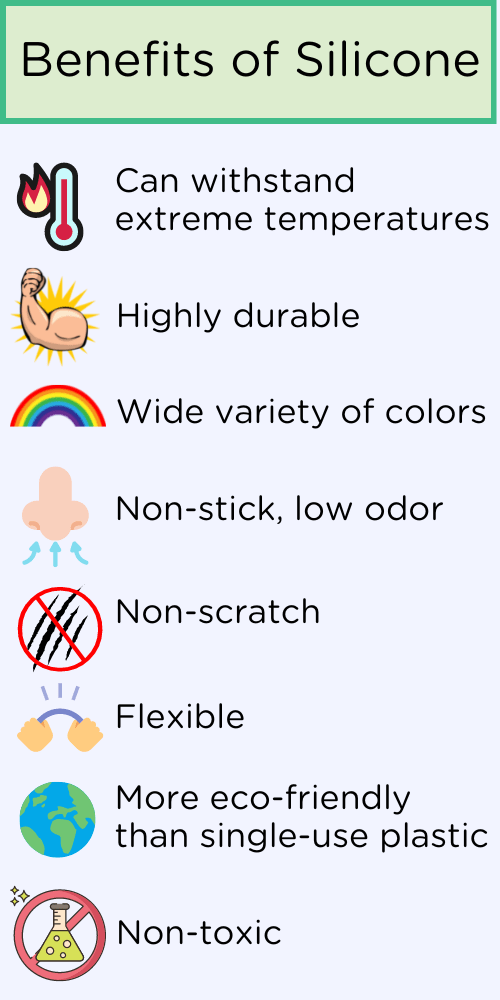
Because of these many benefits, companies produce a wide variety of silicone kitchen tools… Everything from silicone ice cube molds and spatulas to silicone sippy cup lids.
Is Silicone Safe?
Yes, silicone is safe and non-toxic to human health. However, silicone is used in many applications outside the kitchen.
Kitchen products are made from FDA-approved food-grade silicone. This type of silicone is safe for food contact and doesn’t contain chemical byproducts or fillers.
That said, some silicone products are of higher quality than others. And some may be more heat resistant than others.
To ensure safety when purchasing, check the product’s description:
- Ensure the product is 100% food-grade silicone without fillers. Fillers can transfer odors into the food when heated. (Pro tip: Check customer reviews for complaints of strange odors or disfigurement.)
- Review the maximum temperature rating to make sure you’re using it safely.
Silicone is also safer (and more heat-resistant) than plastic, which often contains toxic BPA and phthalates. Despite “microwave-safe” labels on plastic containers, these toxins can still leach into food when heated.
Microwave-safe means the plastic won’t melt, nothing else.
Can Silicone Go in the Microwave? How to Safely Microwave Silicone
Silicone is safe in the microwave and won’t leach chemicals into your meal.
The only thing to remember is that silicone sometimes heats up when in contact with hot food. To prevent burns, avoid touching those food-contact portions of the silicone. Grab from the sides.
Conveniently, unlike plastic or glass, you can put silicone in the microwave straight from the freezer. The former can crack or burst when exposed to rapid temperature changes. Silicone can’t.
You can microwave all kinds of silicone utensils, including silicone bakeware (such as muffin molds), silicone cups, bags, food containers, and even silicone bowls. But, always double-check that the items are microwaveable—
Some silicone utensils may contain non-microwave-safe materials like plastic handles or metal.
Other Kitchen Uses for Silicone
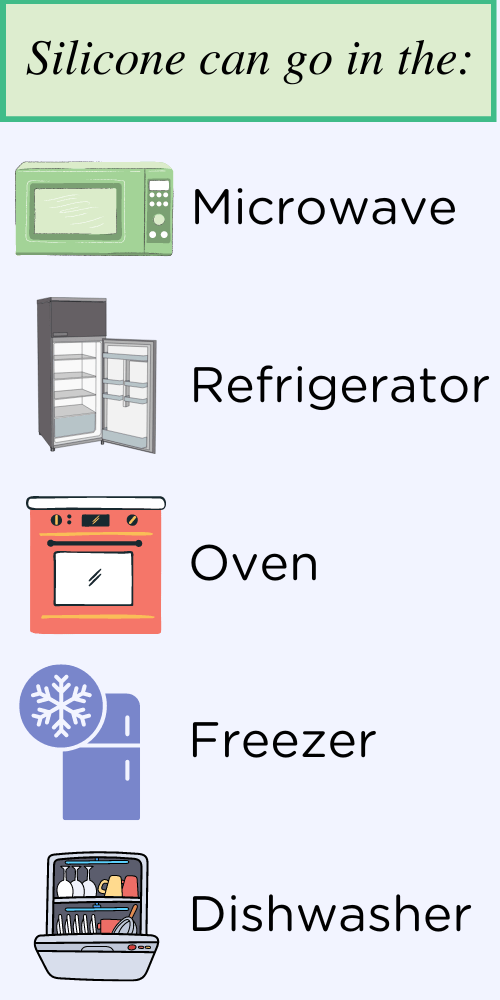
Microwaving isn’t the only thing you can do with silicone kitchenware! You can also freeze silicone or use it in the oven below 440℉ (just double-check your individual items’ labels for temperature ratings).
While silicone can go directly on the oven rack, we recommend placing it on a more rigid baking sheet. Silicone bends, so a rigid sheet underneath will help you remove the silicone from the oven without spills.
Best of all, silicone is dishwasher-safe, making cleanup a breeze.
However, food can sometimes stick to your silicone, often from over-cooking. If this happens, place your silicone into the oven at 350℉ for 5-10 minutes, then soak it in hot water. This should help loosen the food.
Final Takeaways: Is Silicone Microwave Safe?
Go ahead, microwave your silicone kitchenware to your heart’s content! Silicone is safe in the microwave and won’t harm you, your family, or your guests’ health.
Just make sure to check the label to ensure your silicone products are high-quality, 100% food-grade silicone.
And that’s it! The only thing left to do is enjoy your delicious kitchen creations and easy cleanup!
P.S. Check out our ultimate non-toxic bakeware guide to explore more safe cooking tools for your kitchen.

Hi there! I'm Adam, author and founder of TGL. Since 2016, I've produced and sold non-toxic kitchenware throughout the US. Today, I'm using my passion and experience in sustainable product manufacturing to help families avoid unsafe reusable foodware. When I'm not writing, you'll find me hiking or camping throughout Appalachia!
Enjoyed this post? Share it with your friends!
Related Posts

